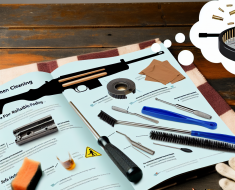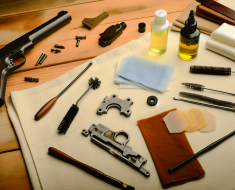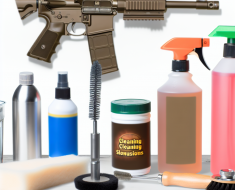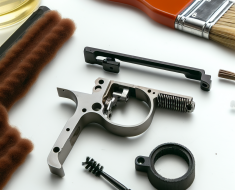Gun Cleaning: Best Practices for Different Calibers
Maintaining firearms is crucial for ensuring safety, reliability, and longevity. One of the most fundamental aspects of firearm care is regular cleaning, which not only prevents malfunctions but also enhances accuracy and performance. However, gun cleaning isn’t a one-size-fits-all process. Different calibers require specific approaches due to variations in barrel size, powder residue, and fouling characteristics.
In this comprehensive guide, we will explore the best practices for cleaning firearms across various calibers. From small .22 LR pistols to large .50 BMG rifles, understanding the nuances of each caliber’s maintenance needs can significantly improve your shooting experience and firearm lifespan.
Understanding the Importance of Gun Cleaning
Before diving into caliber-specific techniques, it’s essential to understand why gun cleaning matters. Firearms operate under high pressure and heat, which causes carbon buildup, lead deposits, and other residues that can impair function.
- Reliability: Residue buildup can cause jams or misfires.
- Accuracy: Fouling inside the barrel affects bullet trajectory.
- Longevity: Corrosion and rust from neglect can degrade metal parts.
- Safety: Preventing malfunctions reduces accidental discharges or failures during operation.
A study conducted by the National Shooting Sports Foundation (NSSF) found that 75% of firearm malfunctions are due to improper maintenance or cleaning. This statistic underscores the vital role that routine cleaning plays in firearm safety and performance.
The Fundamentals of Gun Cleaning Across All Calibers
Regardless of caliber, some universal steps apply when cleaning any firearm:
- Ensure Safety First: Always unload the firearm before beginning any cleaning procedure. Remove magazines and check chambers visually and physically.
- Disassemble Properly: Follow manufacturer instructions for field stripping your firearm. Avoid forcing components apart as this can cause damage.
- Select Appropriate Cleaning Supplies: Use bore brushes, patches, solvents, lubricants, and cloths suitable for your firearm type and caliber.
- Clean Barrel Thoroughly: Run solvent-soaked patches through the bore to loosen fouling followed by dry patches until they come out clean.
- Lubricate Moving Parts: Apply a thin layer of lubricant on moving components to reduce friction and wear.
- Reassemble and Function Check: Ensure everything is correctly put back together and perform a function check without ammunition.
The key differences emerge mainly in the choice of tools (such as brush size) and solvents depending on caliber-specific residue characteristics.
Cleaning Small Caliber Firearms (.22 LR to .380 ACP)
The small calibers are popular for target shooting, plinking, training new shooters, and concealed carry. Their barrels are generally thinner with smaller bores which influence how you clean them effectively.
.22 Long Rifle (.22 LR)
The .22 LR is one of the most common rimfire cartridges worldwide. It’s known for its low recoil but also notorious for fouling due to its rimfire design where priming compound residues build up rapidly inside the chamber and barrel.
- Bore Brushes: Use bronze or nylon brushes sized specifically for .22 caliber (around .223 inch diameter).
- Chemicals: Employ dedicated rimfire solvents that dissolve copper fouling as well as carbon deposits.
- Patching Technique: Run multiple solvent-soaked patches followed by dry patches until they emerge clean; rimfire barrels tend to foul quickly so frequent cleaning after each shooting session is recommended.
- Lubrication: Use light oil sparingly as excessive oil can attract dirt inside small bores affecting accuracy.
A case study from a shooting range in Texas noted that shooters who cleaned their .22 LR firearms immediately after use experienced a 40% reduction in misfires compared to those who cleaned less frequently. This highlights how critical timely cleaning is with rimfire calibers.
Pistol Calibers: .32 ACP to .380 ACP
Semi-automatic pistols chambered in these calibers often have tighter tolerances requiring careful attention during cleaning to avoid damaging delicate parts such as extractor claws or recoil springs.
- Bore Size & Brushes: Brushes matching bore diameter are essential—generally around .32 inch or .355 inch depending on caliber.
- Solvents & Lubricants: Use quality copper removers like Hoppe’s No.9 or M-Pro7 along with CLP (cleaner-lubricant-protector) products designed for pistols.
- Muzzle Crown Care: The muzzle crown affects bullet exit; avoid aggressive brushing here to maintain accuracy.
Anecdotal evidence from competitive shooters suggests that improper cleaning leading to damaged muzzle crowns can cause noticeable accuracy degradation even at moderate distances (25-50 yards).
Cleaning Medium Caliber Firearms (9mm to .45 ACP)
This category includes some of the most








